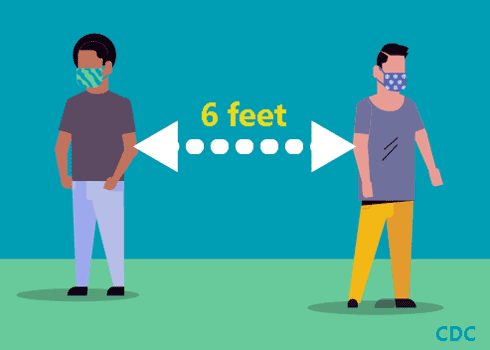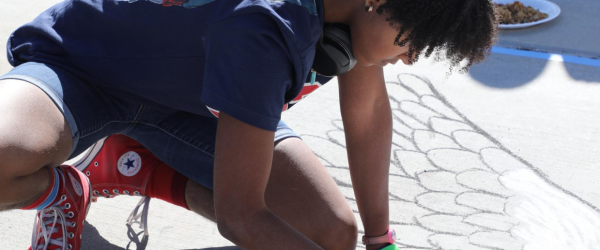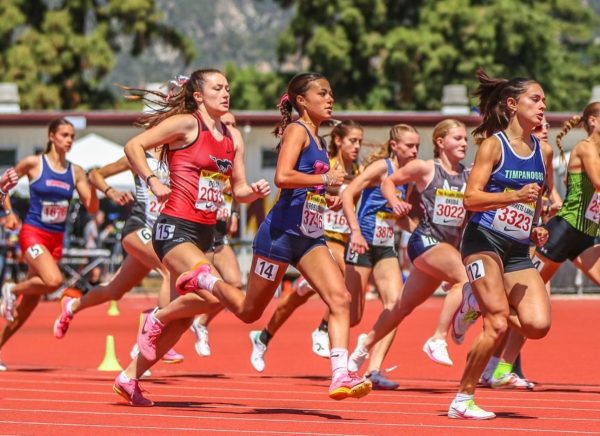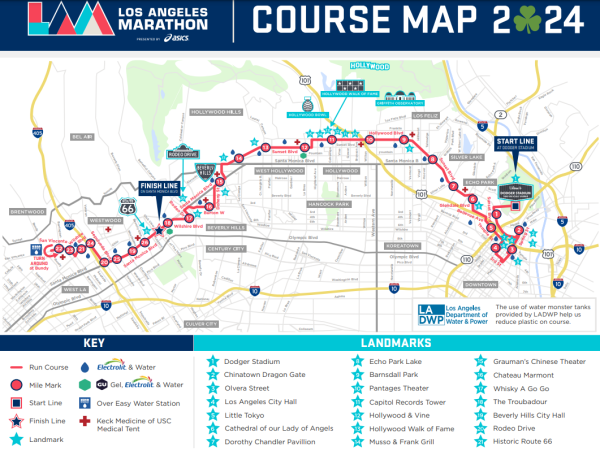COVID-19 calls for Social Distancing

Remaining at least 6 feet apart from someone is key to social distancing
May 13, 2020
Although it may be disappointing to hear that numerous school events, gatherings, and festivals are being canceled, there is an extreme public health reason for these measures. This precaution will help stop or slow down the spread of the disease. Cancellations of events are most likely examples of the term “social distancing,’ which has become quite familiar ever since the outbreak of the coronavirus, but what does social distancing actually mean? According to healthcare experts, social distancing is deliberately increasing the physical space between people to avoid spreading illness. Staying at least 6 feet apart from someone will lessen the chances of catching COVID-19. Some examples include avoiding mass gatherings, working from home, closing schools, and communicating electronically.
So why practice social distancing? Social distancing is the best tool that everyone can use during this time of crisis to avoid spreading or being in close contact with the virus and potentially spreading it. Furthermore, COVID-19 is spread mainly through close contact with people for a prolonged amount of time. Spread of this disease can happen when an infected person coughs, sneezes, or even talks causing droplets from their mouth to land on the mouths or noses of other people close by. This virus can live up to hours or days depending upon the amount of sunlight and humidity so even people who are infected but don’t have symptoms also pose a threat. That is why social distancing is key to limiting the amount of contact with infected people and even contaminated surfaces.
Ultimately the goal of social distancing is also vital in “flattening the curve,” meaning it will aid in slowing down the spread of the virus—which in turn helps to avoid a spike in cases that overwhelms the healthcare system. To lessen the chances of catching COVID-19 social distancing works, but it takes time to generate results. Even before social distancing completely eliminates transmission of the virus, it can still slow the transmission of the virus, ensuring that health care systems have adequate time to ramp up the capacity to respond to the pandemic. For this reason, when evaluating social distancing results, it is critical to remember that the United States is still comparatively in the early stages of this pandemic. China’s first cases appeared in early December; the first case in the United States was identified in mid-January.
When asked what her thoughts were on social distancing was, Taylor Tran (12) stated that “it’s pretty effective because as long as one follows the rules there is no room for contact with the illness; however, it has been quite difficult and I miss my friends a lot, but I know by practicing social distancing it will benefit everyone in the long run.”
Even though these times may be tough and worrisome, it is extremely crucial to do the very best that we can to ensure everyone can return back to their normal lives again. Social distancing will help if everyone follows this technique.





















